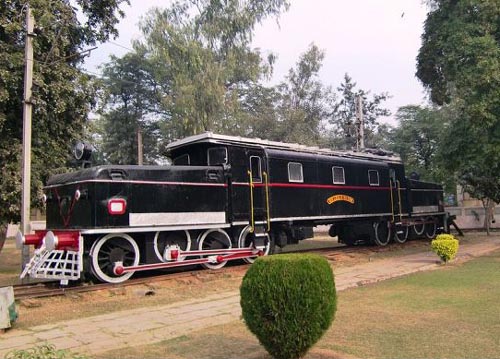National Rail Museum

Information on National Rail Museum (New Delhi) - History & Architecture
The National Rail Museum is located in Chanakyapuri, New Delhi and aims at throwing light on the heritage value of Indian rail. It opened its doors to the public on 1st February in the year 1977. The museum claims an area of more than 10 acres which includes both outdoor as well as indoor displays. A ride on the toy train is made available around the area of the museum on usual days. The museum claims an extensive and diverse collected works of exceptional and historic steam carriages, saloons, engines and other different kinds of old objects related to the railways.
National Rail Museum Architecture
The National Rail Museum offers an insight into the prominent past with regard to the Indian Railways which is supposed to be 140 years old. The museum was planned and constructed by M.G. Satto, a British architect on 1st February in the year 1957. The carpet area for the museum was determined to be 10 acres and the museum is considered as a fundamental part of the heritage presently. The museum houses various kinds of locomotives and displays a range of replicas related to train coaches and engines.
National Rail Museum History
A few of the key displays are known to enjoy immense historic significance such as the Patiala State Monorail Trainways, Fairy Queen, Saloon of Prince of Wales, Fire Engine, Saloon of Maharaja of Indore, Electric Locomotive Sir Leslie Wilson, Saloon of maharaja of Mysore and the Electric Locomotive of Sir Roger Lumley. The Patiala State Monorail Trainways is an exceptional for of monorail which was constructed in the year 1907. This remarkable kind of train was founded on the "Ewing System" and linked Sirhind with Bassi. The distance between both the mentioned places was learnt to be about 6 miles. The design of this monorail was developed by Colonel Bowles. The extraordinary train system includes just a single rail track. This mono rail track, the wheel used for carrying the weight are run by placing one large iron made wheel on the other side in order to maintain a perfect balance and also for ensuring a standing position of the train. This monorail was constructed by Koppel & Orenstein from Berlin. The train kept running till the year 1927. In 1927, the rail was stopped on the arrival of quicker and improved transportation forms such as buses and cars. In some way, the Chief Engineer's car which was used for inspection and an engine luckily got left behind from getting sold in the form of scrap and was kept in the scrap enclosure. In the year 1962, the scrap of Patiala State Monorail Trainways was noticed by Mr. Mike Satow, an eminent railroad historian. Thus, one engine got completely restored on order by the Northern Railway Workshops at Amritsar. The Fairy Queen is considered to be one of the globe's oldest forms of functioning steam engines in running service.
The Fire Engine also known as Morris Fire Engine was manufactured by the reputed Salford based fire engineers from Manchester, M/s. John Morris and Sons Ltd. in the year 1914. Only two fire-engines of Morris-Belsize are learnt to subsist in the world as of date. The Saloon of Prince of Wales was manufactured especially for King Edward VII for his trip to India. The Saloon of Maharaja of Indore belonged to the Maharaja of Indore and the Saloon of Maharaja of Mysore served as the private saloon for the Maharaja of Mysore and was designed with gold, teak and ivory.
National Rail Museum Tourism Significance
The opportunity to have a glimpse onto the royal saloons which are considered to be an element of regal history and therefore, attracts quite a number of foreign as well as local tourists. This museum remains to be a favourite among the trainspotters and children owing to its vintage collection and toy train ride.
- Andaman Nicobar Monuments
- Andhra Pradesh Monuments
- Assam Monuments
- Bihar Monuments
- Chhattisgarh Monuments
- New Delhi Monuments
- Goa Monuments
- Gujarat Monuments
- Haryana Monuments
- Himachal Pradesh Monuments
- Jammu and Kashmir Monuments
- Karnataka Monuments
- Kerala Monuments
- Madhya Pradesh Monuments
- Maharashtra Monuments
- Odisha Monuments
- Punjab Monuments
- Rajasthan Monuments
- Tamil Nadu Monuments
- Telangana Monuments
- Uttar Pradesh Monuments
- West Bengal Monuments